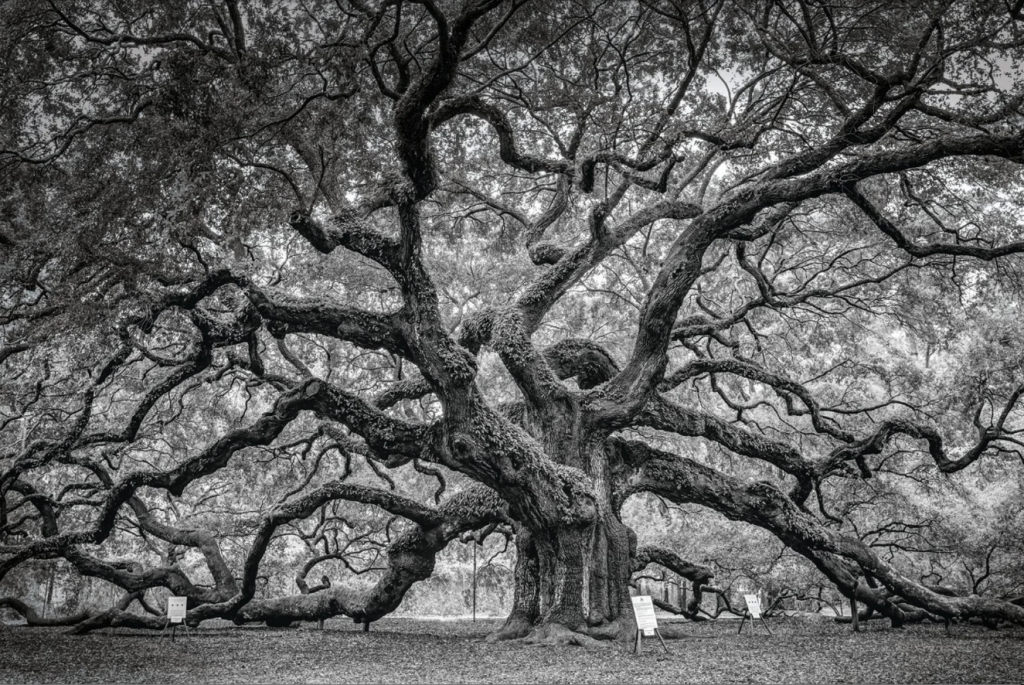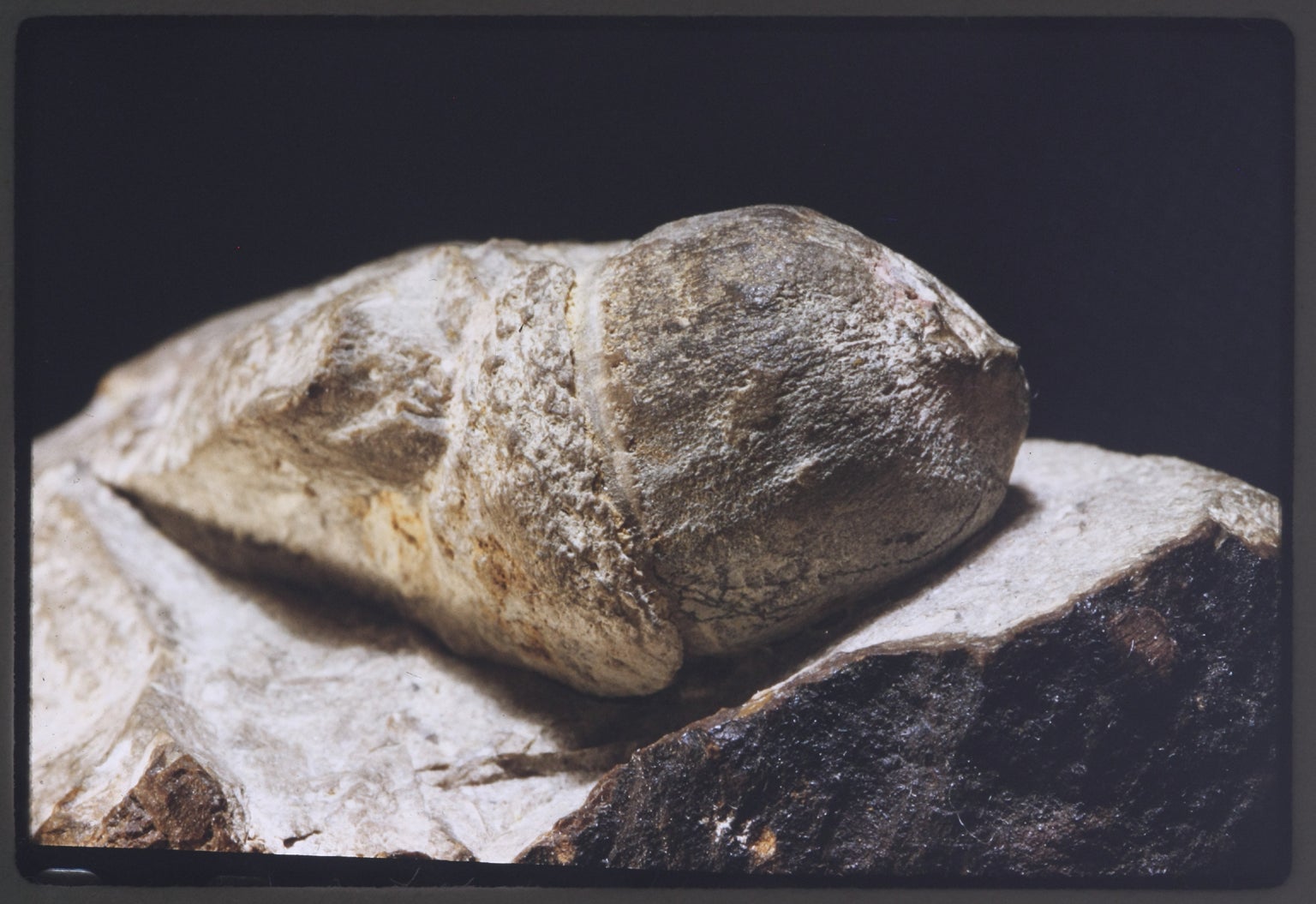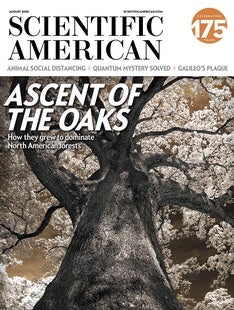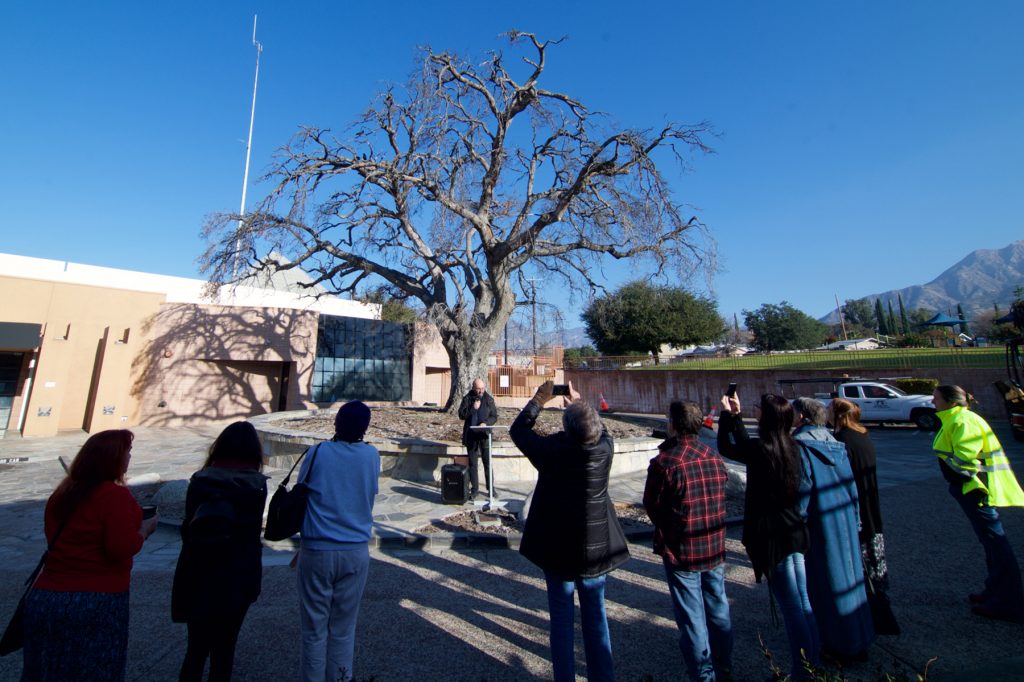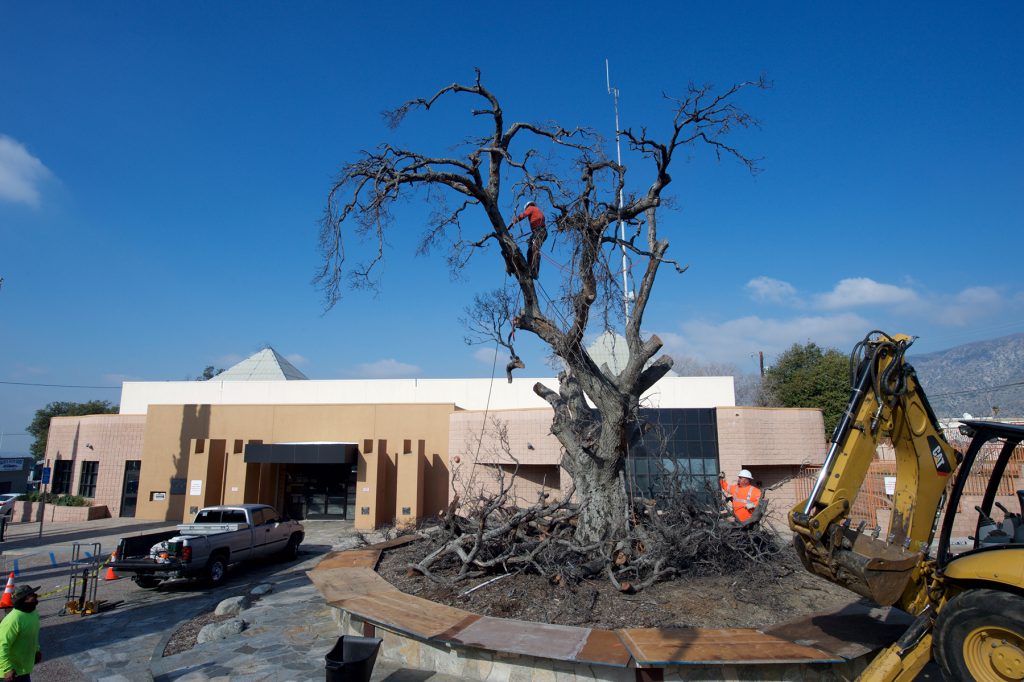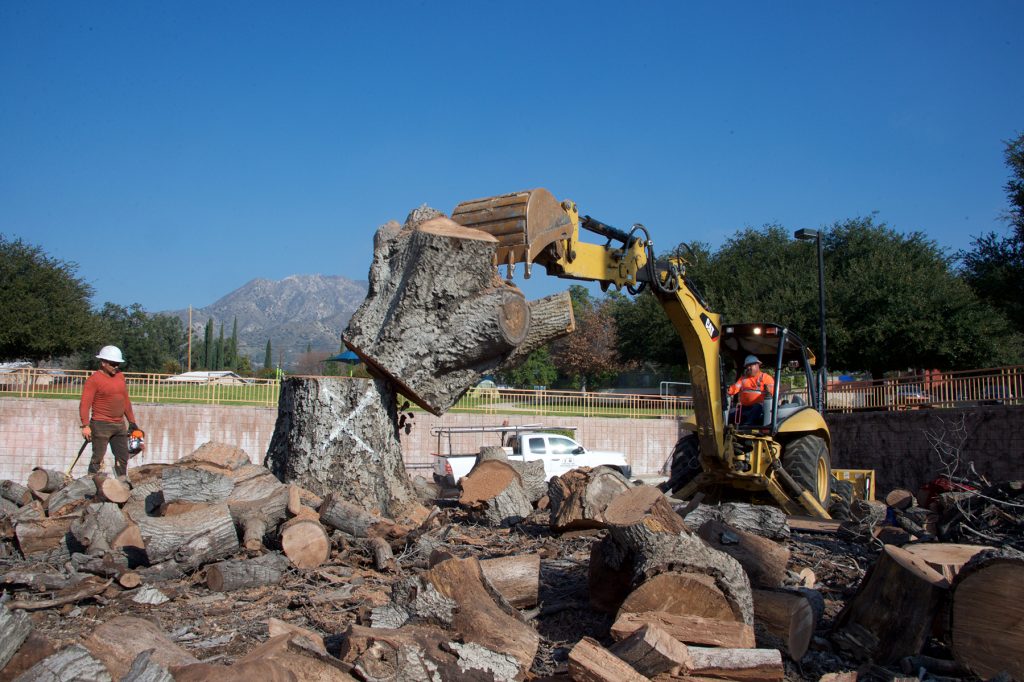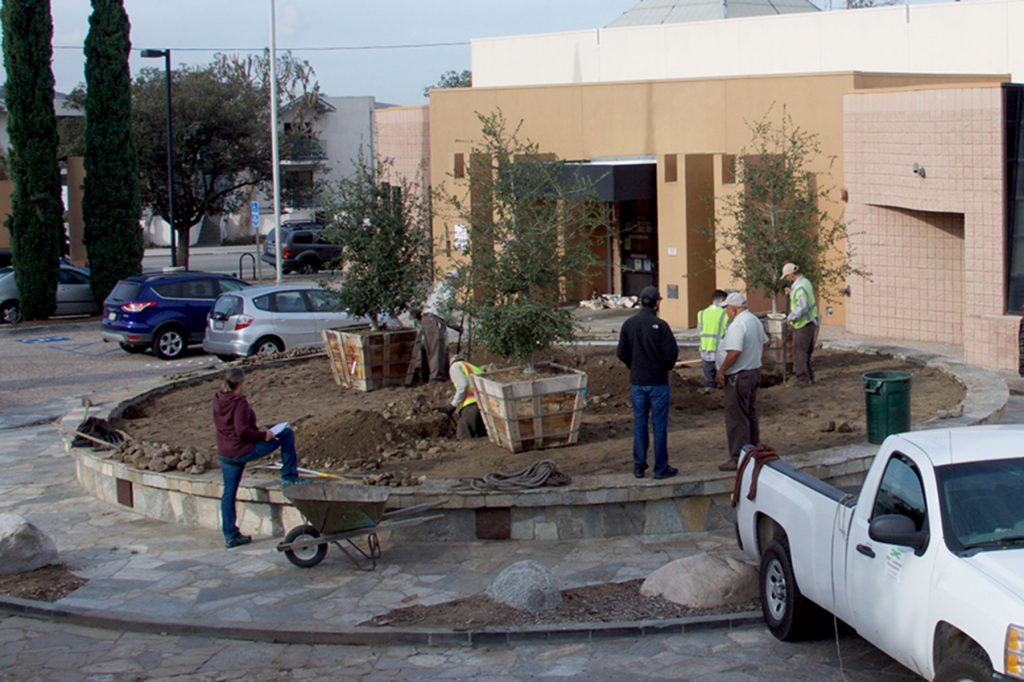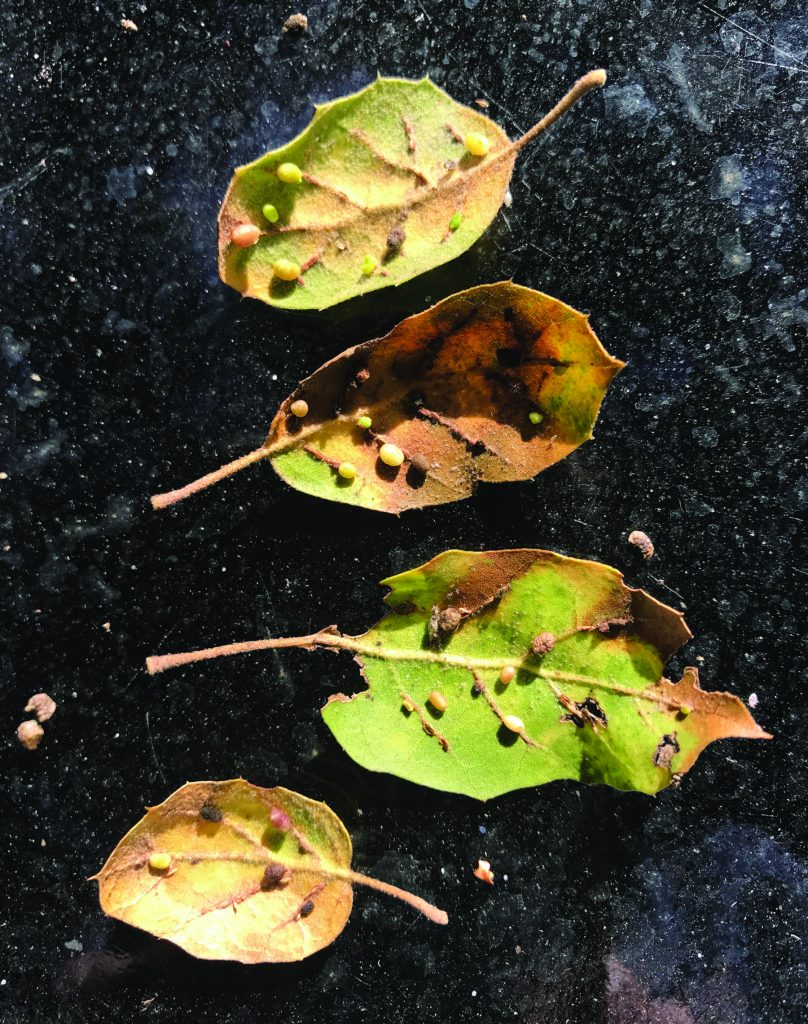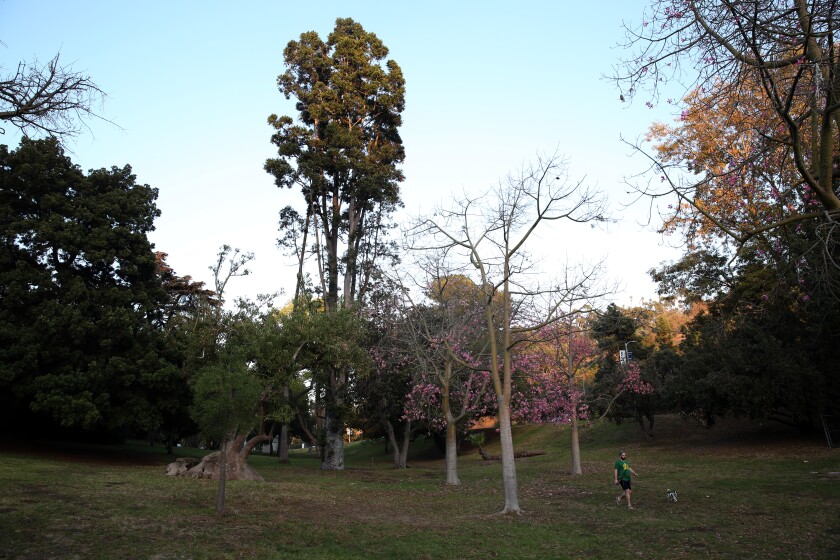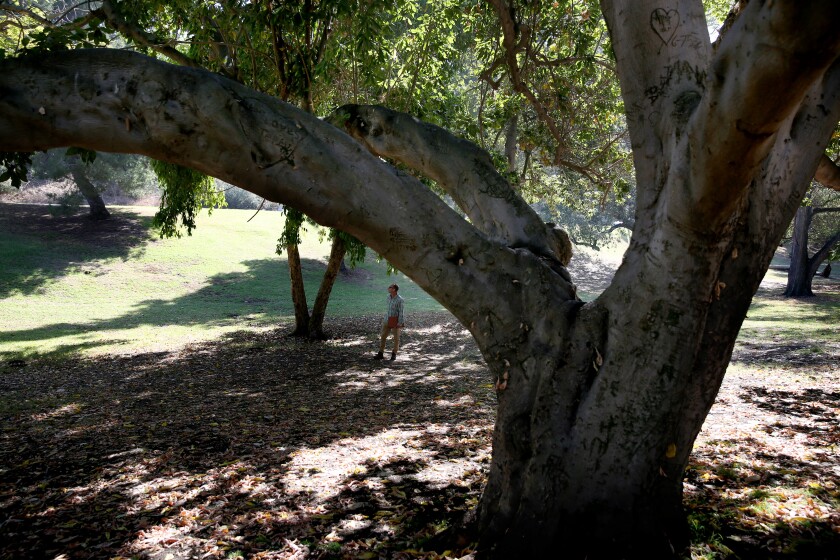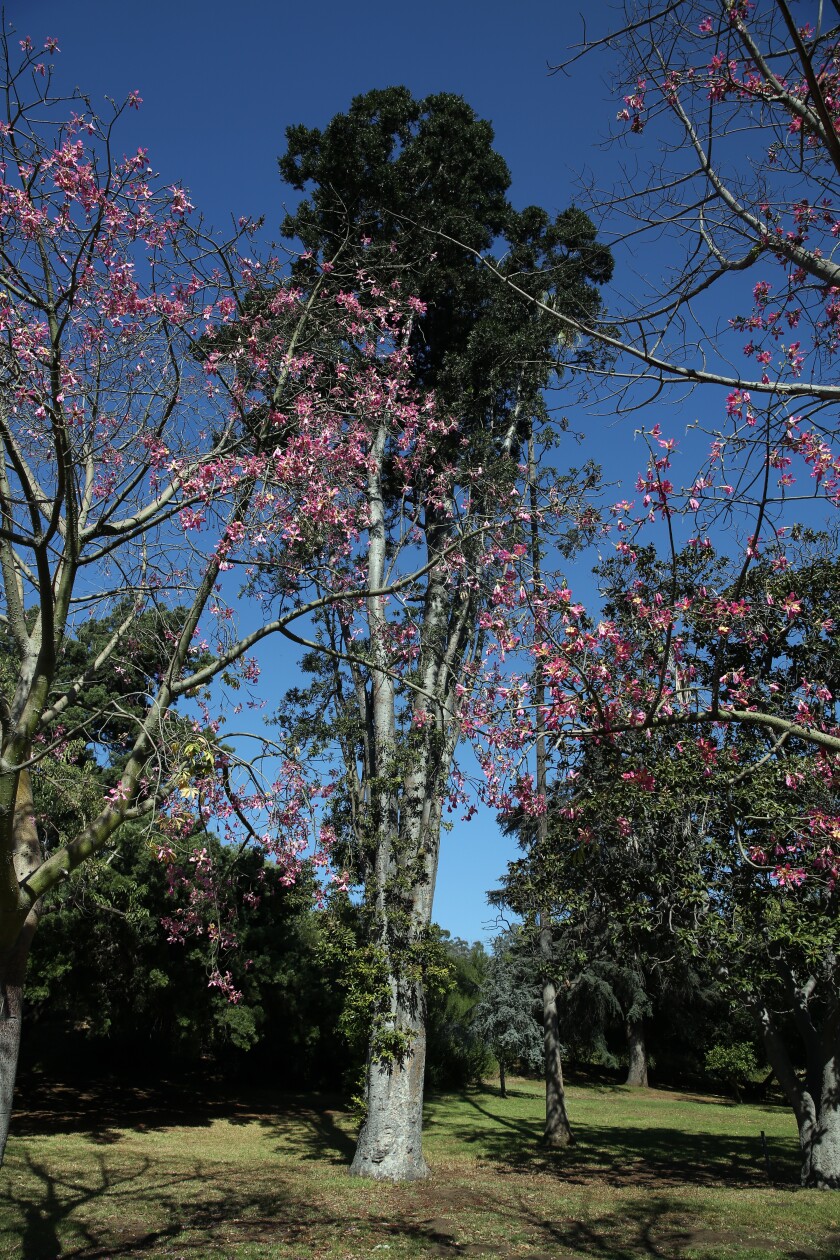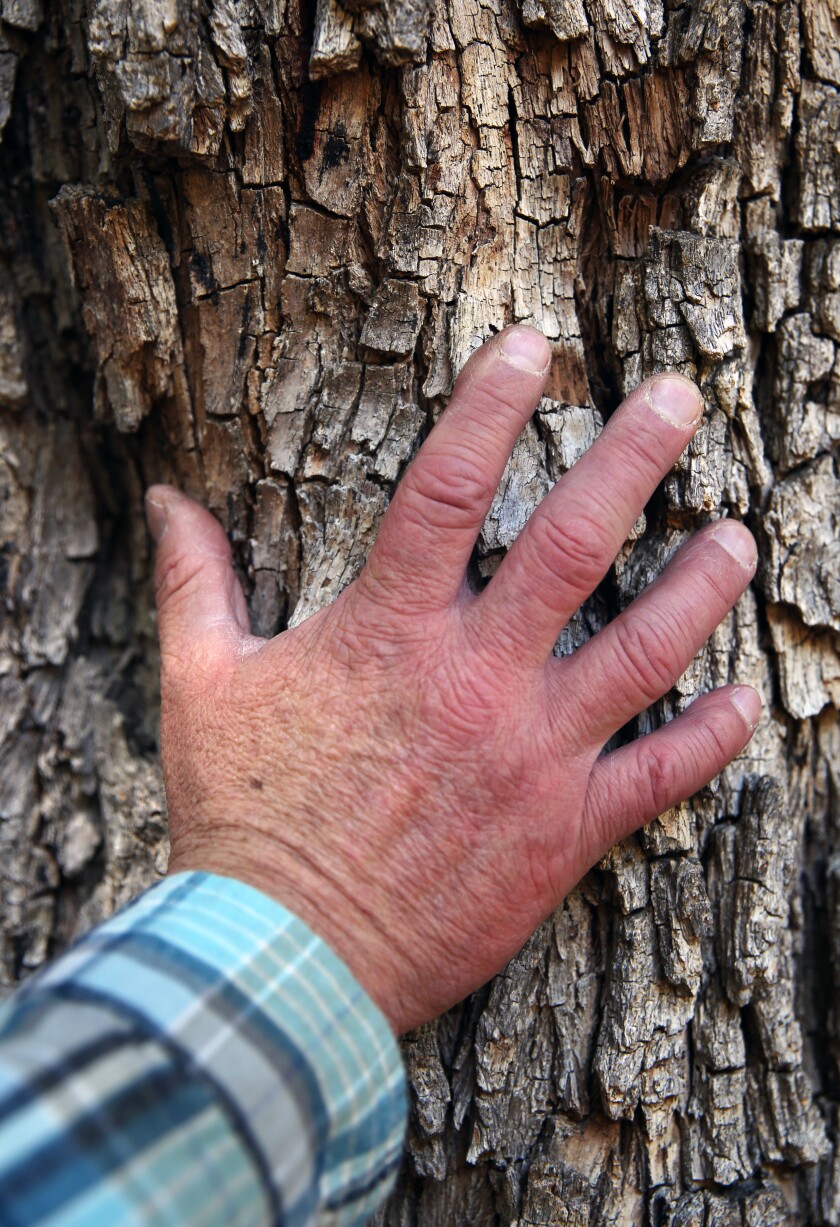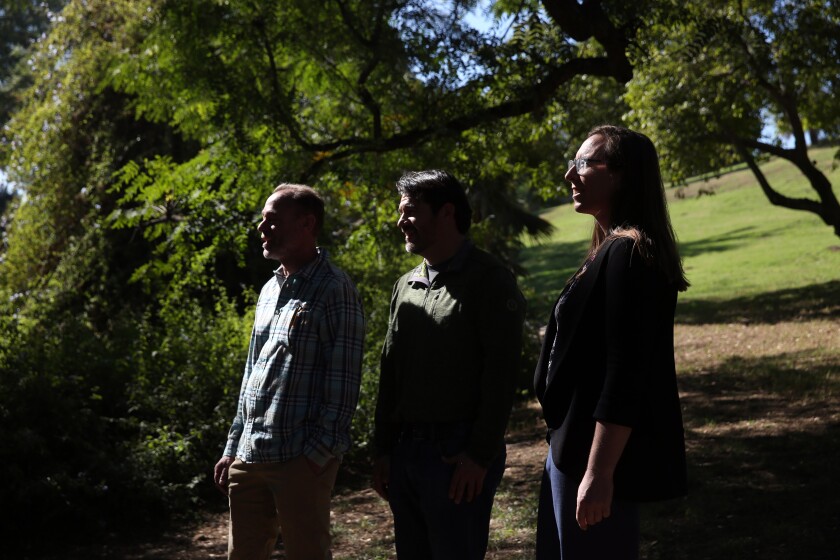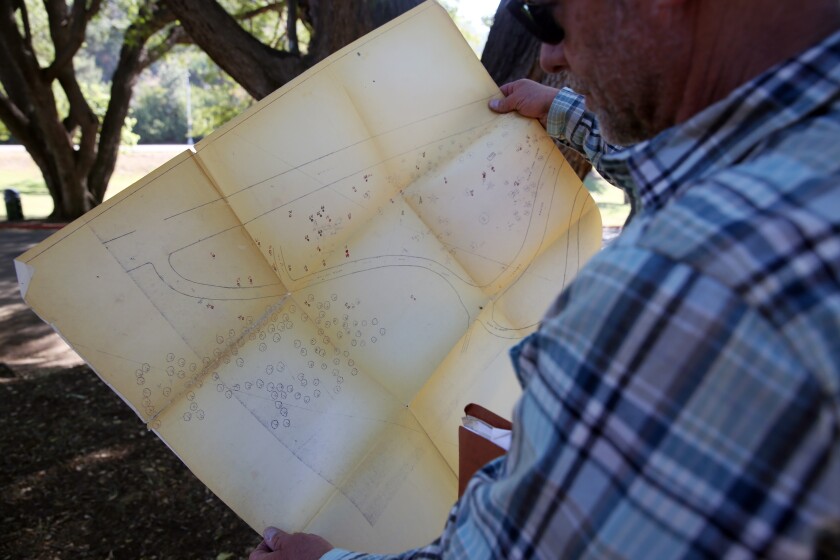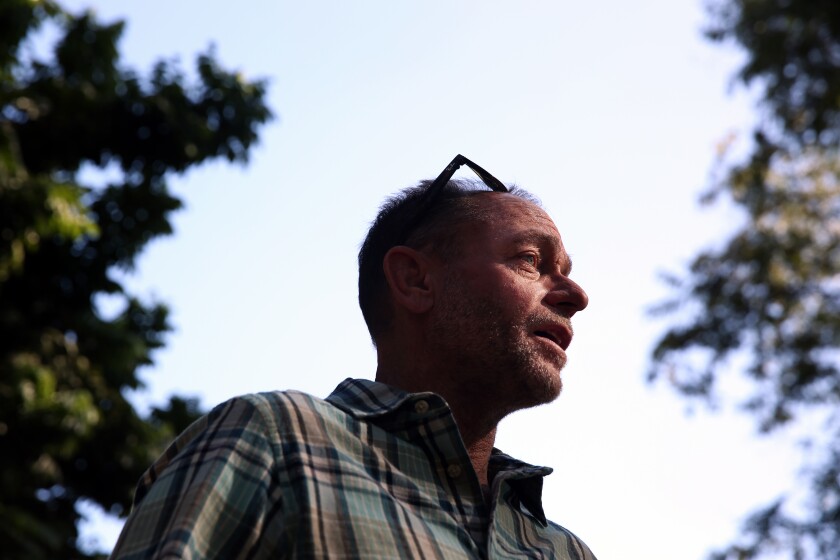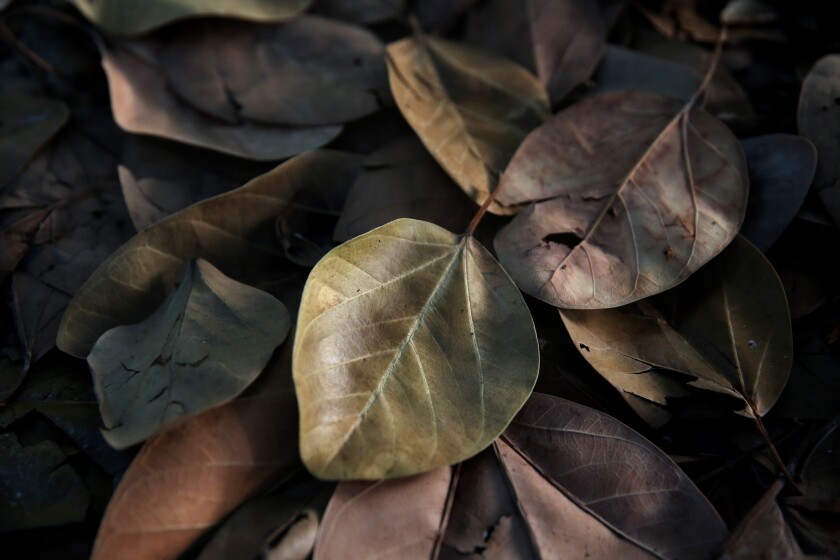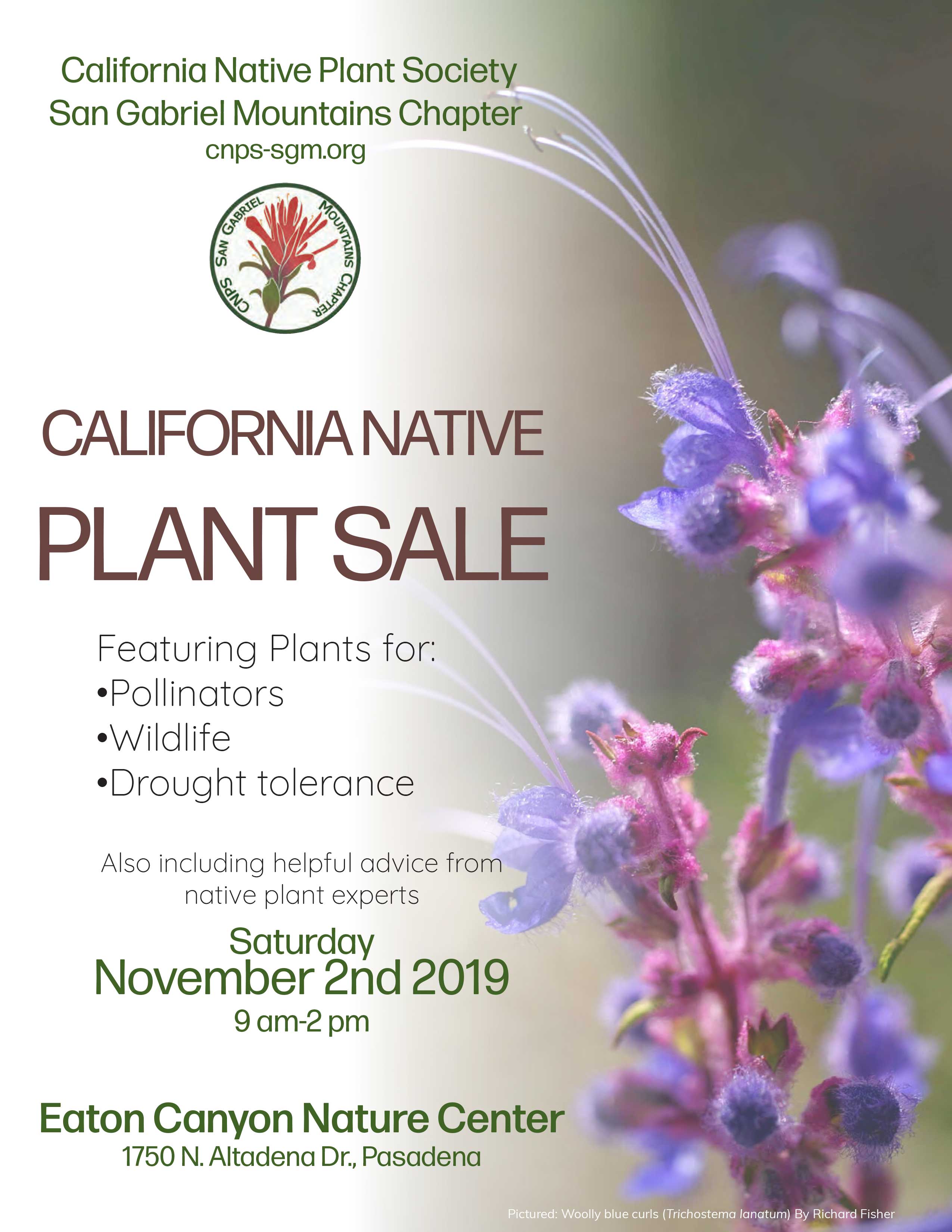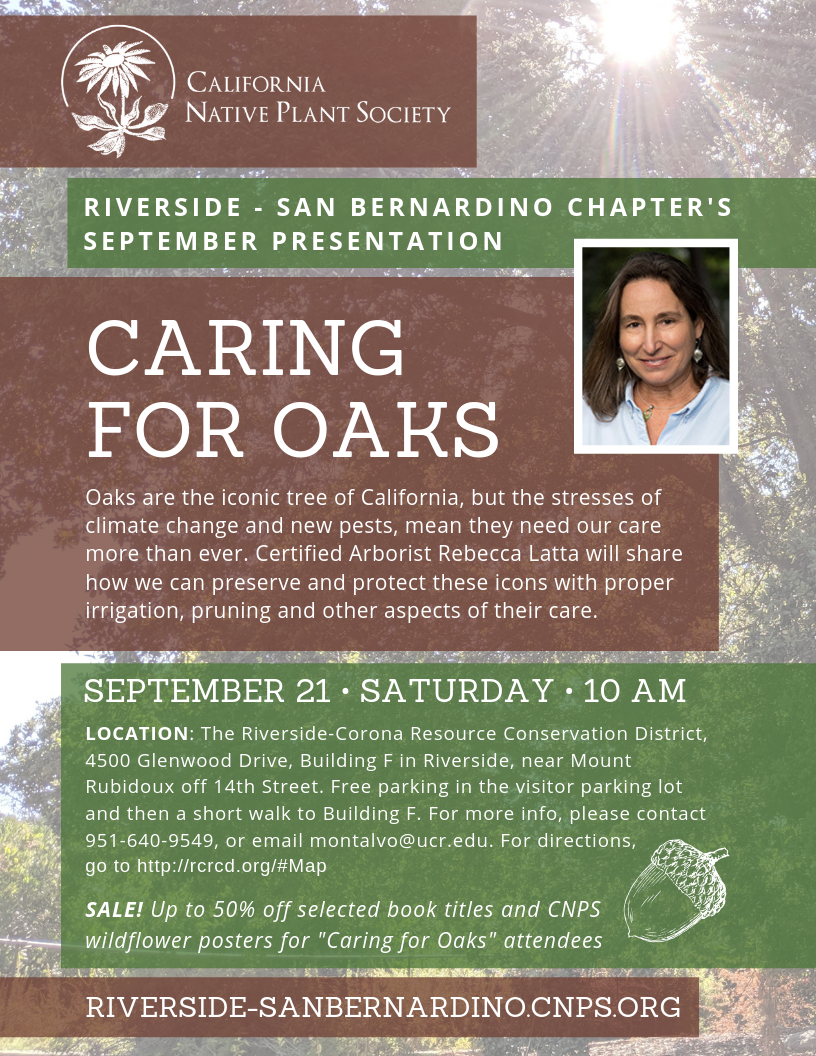© 2020 Mountain News
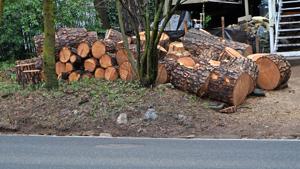
In December of 2019, a crew of contractors from ACRT Inc., an independent vegetation management company, arrived in the Upper Little Bear Mountain Club community. They walked the narrow, single-lane roads quintessential to the neighborhood, occasionally stopping to tie orange ribbons to select trees. A resident from the community, who wished remain anonymous, said he approached the contractors and inquired about the tags. But instead of receiving a clear answer, the man was given a telephone number to call.
These contractors were hired by Southern California Edison to assess potentially hazardous trees as part of the utility’s ongoing wildfire mitigation effort — an effort Edison claims will reduce the risk of a catastrophic fire.
Certified Arborist Rebecca Latta … has worked as an arboricultural, horticultural, water management consultant in the Los Angeles area for over 25 years, eight of which she said were as an Edison subcontractor.
But some homeowners question the aggressive approach Edison is taking within the mountain communities. Healthy trees have undergone tree topping, side pruning and in some cases have been cut down altogether.
Some affected property owners believe the contractors responsible for making these decisions lack the botanical expertise necessary to accurately assess the tree’s risk.
Additionally, Edison stated that they use arborists from out of the area, bringing into question whether their hires possess the knowledge of plants and wildlife specific to the San Bernardino Mountains.
Homeowners have expressed concern over the seemingly subjective criteria Edison and its contractors use when determining which trees need to be felled and which will remain standing — dependent more upon how the contractor feels on the day they scout a property rather than on a set of scientific criteria.
Meanwhile, Edison has tried to reassure the community that their vegetation management practices are ultimately in the best interest of public safety and fire prevention.
The homeowner in the Upper Little Bear community is currently challenging the decision contractors made about a white fir tree in the community’s communal area. While this tree is not on his personal property, he believes that it is a financial asset to the community.
“The reason you come up here is for the trees,” he said. “This sets a bad precedent. It gives Edison a precedent to cut whatever and wherever they want.”
Certified Arborist Rebecca Latta conducted an independent assessment of the white fir on Feb. 27. Latta has worked as an arboricultural, horticultural, water management consultant in the Los Angeles area for over 25 years, eight of which she said were as an Edison subcontractor.
While evaluating, Latta estimated the white fir to be between 150 and 200 years old. She pointed to its damaged bark, noting that the edges of it were growing back.
“It looks like the tree is trying to put new wood on at the edges where the damage is, which means the tree has vigor,” Latta said.
She dismissed the idea that eyeballing the tree was a thorough enough analysis, instead insisting that Edison contractors should have used a sonic tomograph — a non-invasive machine that measures the thickness of the tree using soundwaves — to accurately determine if the internal wood is rotting.
She also noted four woodpecker holes located towards the middle of the trunk, indicating the tree’s potential to house wildlife, especially since the tree is in a wildlife corridor.
Edison and ACRT Inc.’s arborists had a different opinion.
“There are multiple wounds and cavities that have a high probability of causing tree failure,” stated Edison spokesperson Mary Ann Milbourn. “In the case of potential wildlife habitat, the arborist would flag it for environmental review. That was not the case with this tree.”
The fir sits adjacent to the man’s home and approximately 50 ft. from electrical lines — just out of reach if it fell, according to Latta’s estimate. In his yard, a tree as tall as the fir stands. It is about ten feet from the electrical lines, yet Edison’s contractors did not flag it for felling.
A Sliding Scale
The discrepancy between the assessments performed by Latta and Edison speaks to the seemingly arbitrary criteria, as well as the contrasting interests between the two parties. Latta says she is interested in environmental preservation while Edison’s Government Relations Manager Jennifer Cusack said that Edison errs on the side of caution — if there is even a slight chance that the tree will be a hazard then it will be pruned or felled.
Mountain resident Karla Kellems experienced these subjective criteria firsthand. “My husband was out working in the yard and an SCE (Edison) guy comes by,” Kellems said. Her husband was initially told that their trees would not need any management work done. But to her surprise, she said she later found an Edison door hanger on her front door. The hanger stated that her trees would be pruned. Kellems said she called the telephone number written on the door hanger and requested a re-evaluation. She spoke with the man who had left the hanger. When she asked if he was an arborist, he said “no,” but he was studying to become one. When the new arborist visited, Kellems said she was told no action would be necessary. “Had we not said anything, they would have pruned our trees,” she continued.
Edison maintains that their crews use a “tree risk assessment” for every tree. Milbourn said Edison and its contractors look at structural defects, decay, soil conditions and hazards the tree may pose. However, the Upper Little Bear Mountain resident said that he observed “no checklist whatsoever.”
“We’re going to always look for weak attachments, including bark,” said David Guzman, a Manager of Vegetation Management and Forestry at Edison.
They look for things like included bark, codominant leaders — areas where a trunk splits into two — less than eight feet from the ground, uprooting and the wind patterns. Guzman stressed that every arborist conducting a hazard tree removal assessment considers these qualities.
“They should be doing a tree risk analysis, and the person who should be doing that is somebody who has been trained as a tree risk assessor,” Latta said.
Qualified V.S. Certified
Edison has two vegetation management programs — a hazard tree management program and the distribution and transmission vegetation management plans. The former includes heavy tree topping and removal. The latter focuses on trimming for compliance and possible removal.
According to “Revision 2” of their “2020-2022 Wildfire Mitigation Plan,” the utility plans to assess and perform prescribed mitigation to 75,000 trees under its hazard tree management program in 2020. Guzman said that Edison hires contractors through a “request for proposal” bidding process. Performance, safety and historical data of the prospective hire are considered when vetting the contractor.
Additionally, every mitigation decision within the hazard tree management program is made by an International Society of Arboriculture Certified Arborist. However, this is not true of its distribution and transmission vegetation management plans. “…Not all tree trimming/removal crews have an arborist, although the contracting companies have arborists on staff…” Milbourn stated.
According to ISA’s website, to take the Certified Arborist exam one must have “three or more years of full-time, eligible, practical work experience in arboriculture” or a “degree in the field of arboriculture, horticulture, landscape architecture, or forestry from a regionally accredited educational institute.” But there’s a catch. No practical or fieldwork portions of the test exist. “The certification does not do a practical test on whether you know how to properly prune a tree. You don’t really have to know species and you can take the test online,” Latta said.
Guzman likened the Certified Arborist exam to the exam used for real estate agents — most people do all of the studying alone with a study guide.
Further, there are different tiers of certifications of which “Certified Arborist” is the most general. This is one of Latta’s qualms with Edison. Their contractors are marking trees without a tree-risk assessment completed by someone with an ISA Tree Risk Assessment Qualification.
“Yes, we understand these arborists are certified, but that doesn’t make them qualified,” she said. “My personal opinion is that all certified arborists should have a background in science.”
Lake Arrowhead resident Joe Pounds had a tree tagged for felling on his property. He had an oak tree that he described as “wrapping around the power line.” Without notice, Pounds said contractors came by his property and marked the tree. He said he came out of his house and began asking questions and making a case for the tree to remain standing. Pounds recalled the contractor saying the tree was in poor health.
Over the next couple of days, Pounds said he called Edison’s general phone line a couple of times, left messages and never received a callback. “I didn’t really think the guy was listening,” he continued. When the contractors returned, they trimmed branches but left the tree standing with its limbs intact. Pounds said the work ended up being minimal. “I understand the whole fire danger concern, but there’s no reason to start cutting down healthy trees,” Pounds said. “You have to stand up and be heard.”
A Second Assessment
Edison representatives said it is possible to request a second assessment. “We can re-evaluate a particular tree if a property owner doesn’t agree [on the initial assessment],” Cusack said.
The first step is to call the inspector listed on the door hanger to gain more information about what concerns the contractor had when making the determination. Milbourn said that if the property owner wants to dispute the claim, a certified arborist will come to the property and review the tree. If there is a concern about the wildlife, Edison will send one of their biologists.
Milbourn said that in the past, Edison biologists have delayed vegetation management projects due to bird nesting season. However, after the birds vacate the nests, Edison carries on with the project.
Kellems found the door hanger method of communication to be problematic. At the San Gorgonio Chapter of the Sierra Club’s meeting on March 9, Kellems presented the pros, cons and concerns of fire vegetation management. Edison representatives declined to attend the meeting.
Kellems called the use of door hangers an ineffective way of communicating with second homeowners who may only occasionally be home. In this case, second homeowners would not even be able to challenge the decision. Property value, especially in the mountain communities, has been tied to the type, age and size of trees. It should be looked at as a monetary asset.
Additionally, Kellems noted that the door hanger makes unoccupied homes a target for theft. The door hangers have the date that it was left. She surmised that these homes would be apt for burglaries.
In attendance was a Crest Estate resident. She told a story about her dealings with Edison. On Friday, Oct. 11, 2019, she arrived home from work and discovered the cedar tree that had been growing on her property for over fifty years had been cut down and left in chunks. “I was shocked and heartbroken,” the resident said. She said that three things had gone wrong — she never received an Edison door hanger and Edison had mailed a notice to the wrong post office box. The third issue began in June of 2019 when, after the cedar was listed for removal, she said she spoke with a forester who eventually delisted the tree. But the tree remained on the list. In November of 2019, the resident filed a claim and received a confirmation, but has not heard from Edison since.
Despite stories like these, Edison insists its actions are necessary for the safety of the mountain communities.
“If we feel the risk is that high and the customer is uncooperative, then we will go ahead and take whatever action we need to do, in the proper manner,” Guzman said. “But we still have a process we’re going to take to empower the customer.”
Property owners with questions about Edison’s hazard tree removal process may contact Edison at hazardtree@sce.com or by calling (833) 774-1393.
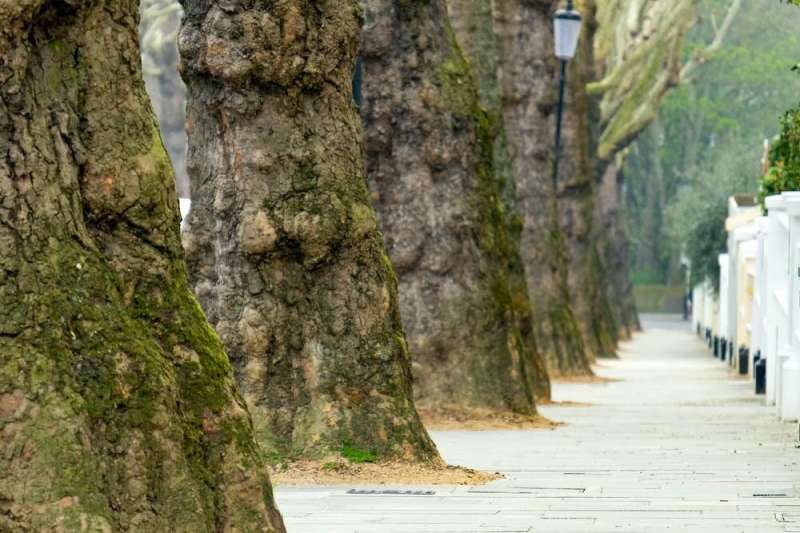 Good for both the environment and human wellbeing. Credit: Willy Barton/shutterstock
Good for both the environment and human wellbeing. Credit: Willy Barton/shutterstock
